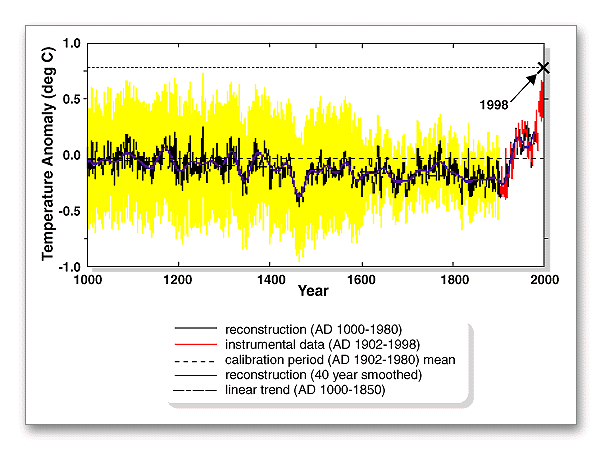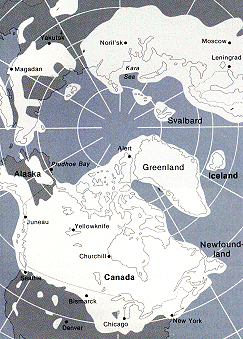"Global Warming" is not a new phenomenon.
Average temperatures did not rise slowly and smoothly to present levels following the last glacial period. Instead, average temperatures increased fairly rapidly until about 8,000 years ago, at which time they were close to current levels. But then, warming continued for almost two thousand years, rising to higher levels than we have seen recently.
Around six thousand years ago, average temperatures dropped rapidly; reaching levels lower than today, and stayed lower for a thousand years.
In fact, over the past seven thousand years, there appear to have been six significant cycles of interglacial cooling and warming.
Warm periods have coincided with significant periods of societal change and architectural accomplishment in many parts of the world. The Medieval Warm Period, from about 850 until 1250 AD, was a time of unusually warm climate in Europe. Other warm periods spanned the peak of Egyptian civilization (2600 to 2200 BC), the late Roman Republic and peak of the Roman empire (roughly 100 BC through 200 AD) , and the Twentieth Century,
 This NOAA plot shows the agency's best estimates for average temperatures over the past 1000 years . 
The Medieval Warm Period was followed by a cooler period which is often referred to as the Little Ice Age. It lasted from about the mid to late 1300s into the late 1800s, almost 500 years. The the bitter cold winters depicted in scenes of the American Revolution, in the 1770s, occurred during this period.
A hundred years ago, following the end of the last prolonged cool period, the Titanic hit an iceberg that was one of many which were released as a then-welcome spell of global warming began to be felt.
The end of the "Little Ice Age" period, in the mid to late 1800s, roughly coincided with the start of a significant rise in industrial activities. Some people claim that industrialization is the cause of the warming trend since then. It may be equally true that the warming trend spawned the vibrant growth of society and industry that began as temperatures began to rise.
It is currently popular to point to the increasing industrialization of the world, coupled with significant human population growth, as primary factors contributing to increases in the concentration of carbon dioxide in the atmosphere. However, it is very likely that there are multiple interrelated links between the rise in average global temperatures and the rising carbon dioxide content of air over the past hundred years.
|
Click to read the full article
http://www.uigi.com/air.html

No comments:
Post a Comment